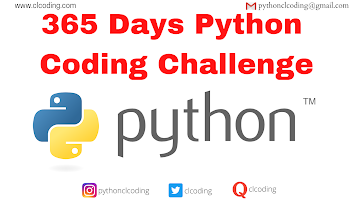Introduction to FastAPI Framework: A Comprehensive Course Review
The "Introduction to FastAPI Framework" course is a beginner-friendly guided project designed to introduce learners to FastAPI, a modern web framework for building APIs with Python. This course offers hands-on experience in creating and deploying APIs efficiently, leveraging the speed and simplicity of FastAPI. If you're interested in web development, API design, or backend development, this course is an excellent starting point.
Why Choose FastAPI?
FastAPI has gained immense popularity among developers due to its speed, ease of use, and automatic interactive API documentation. Here are some key benefits of using FastAPI:
High Performance: FastAPI is one of the fastest web frameworks available, comparable to Node.js and Go.
Type Hints and Validation: Built-in support for type hints ensures robust input validation and better developer experience.
Auto-generated Documentation: FastAPI provides OpenAPI and Swagger documentation out-of-the-box.
Asynchronous Support: Designed to handle async programming with ease, improving API responsiveness.
Ease of Use: Minimal setup and concise syntax make it accessible to both beginners and experienced developers.
Course Structure
The "Introduction to FastAPI Framework" course follows a structured approach, ensuring that learners gain practical skills in API development. Below is a breakdown of what the course covers:
1. Introduction to FastAPI
Understanding the basics of REST APIs
Introduction to FastAPI and its advantages over other frameworks
2. Setting Up the Environment
Installing FastAPI and Uvicorn (ASGI server)
Setting up a virtual environment in Python
3. Building Your First FastAPI Application
Creating a simple API endpoint
Using decorators (@app.get, @app.post, etc.) to define routes
4. Request and Response Handling
Handling query parameters and request bodies
Implementing data validation using Pydantic
5. Error Handling and Responses
Managing error responses with exception handling
Using status codes for effective API communication
6. API Documentation and Testing
Exploring the built-in Swagger UI and ReDoc
Testing APIs using FastAPI’s interactive documentation
7. Deploying FastAPI Applications
Running FastAPI with Uvicorn in production
Deployment options: Cloud platforms and Docker integration
Learning Outcomes
By the end of this course, learners will be able to:
- Develop REST APIs using FastAPI
- Implement request validation and error handling
- Utilize FastAPI’s built-in documentation tools
- Deploy FastAPI applications efficiently
Who Should Take This Course?
This course is ideal for:
- Beginners in API development
- Python developers looking to build scalable APIs
- Backend developers transitioning to modern frameworks
- Anyone interested in learning a fast and efficient way to develop APIs
Join Free : Introduction to FastAPI framework
Conclusion:
The "Introduction to FastAPI Framework" course is a great hands-on guide for anyone looking to dive into API development with Python. Whether you're a beginner or an experienced developer, this course provides practical skills that will help you build, document, and deploy APIs effectively. With its interactive approach and real-world applications, this guided project is a valuable addition to your programming skill set.
If you're ready to explore FastAPI, enroll in the course today on Coursera and start building high-performance APIs effortlessly!



.png)




.png)
















.png)




.png)












0 Comments:
Post a Comment